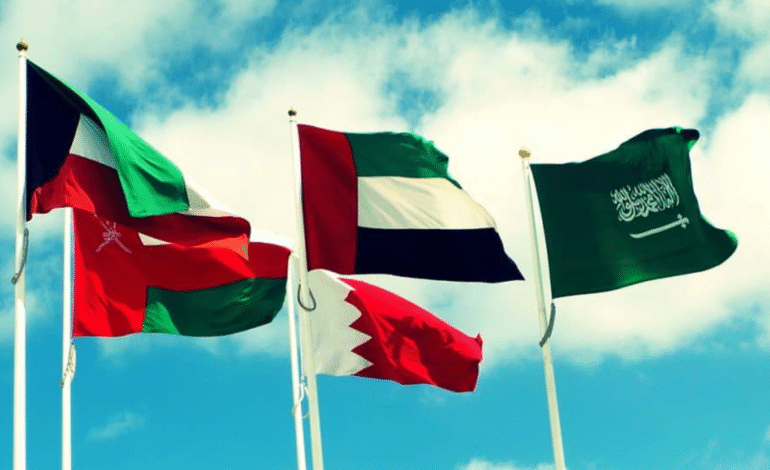GCC Visitor Spending To Reach $223 Billion As Tourism Booms

The Gulf Cooperation Council (GCC) is preparing for unprecedented growth in tourism-related spending as visitor numbers and activities continue to surge across the region. According to the Statistical Centre for the Cooperation Council for the Arab Countries of the Gulf (GCC-Stat), visitor spending in GCC nations is projected to reach an extraordinary $223.7 billion by 2034. This optimistic outlook reflects the success of strategic economic diversification plans and the region’s ongoing commitment to becoming a global tourism hub. As tourism emerges as a key driver of growth, Gulf countries are investing heavily in infrastructure, entertainment, and cultural experiences to attract visitors from around the world.
Tourism’s Role In Transforming GCC Economies
Tourism has become a central pillar in the economic diversification strategies of GCC nations. Historically reliant on oil and gas revenues, countries like Saudi Arabia, the United Arab Emirates, Qatar, Kuwait, Bahrain, and Oman are working to reshape their economic models. Programs such as Saudi Arabia’s Vision 2030, UAE Centennial 2071, and Oman Vision 2040 prioritize tourism as a sustainable growth engine that generates jobs, boosts GDP, and fosters innovation.
The $223.7 billion in expected visitor spending underscores how tourism is no longer just a supporting sector — it is now a primary focus of national development agendas. The Gulf is positioning itself as a region where tradition meets modernity, offering visitors everything from cutting-edge skyscrapers and luxury resorts to ancient heritage sites and natural wonders.
Key Drivers Behind GCC Visitor Spending Growth
Several important factors are contributing to the projected surge in visitor spending across the Gulf. One major driver is the significant easing of visa restrictions. Saudi Arabia’s introduction of tourist eVisas, the UAE’s long-term and multi-entry tourist visas, and Qatar’s visa-free entry for citizens of over 80 countries have made travel to the region simpler and more appealing.
The Gulf’s role as host for major global events has also fueled interest and spending. The success of Expo 2020 Dubai, the FIFA World Cup Qatar 2022, and other high-profile exhibitions, concerts, and sports tournaments has drawn millions of visitors and positioned the region as an international destination for both leisure and business travel.
Additionally, GCC nations are diversifying their tourism offerings beyond traditional luxury experiences. Adventure tourism in Oman’s rugged mountains, eco-tourism in Saudi Arabia’s Red Sea region, and cultural tourism at UNESCO sites like AlUla are attracting new segments of travelers seeking unique and meaningful experiences.
Massive Investments Reshaping The Tourism Landscape
The Gulf’s tourism growth is underpinned by massive investments in infrastructure, attractions, and services. Saudi Arabia is leading the charge with mega-projects like NEOM, a futuristic city being built from scratch, and The Red Sea Project, which aims to set global standards in sustainable tourism. Billions are being allocated for new airports, cruise terminals, entertainment districts, and luxury hospitality developments.
The UAE continues to expand its tourism assets with iconic additions such as Dubai’s Museum of the Future, new beachfront developments, and expanded theme park offerings. Abu Dhabi is enhancing its cultural scene with institutions like the Louvre Abu Dhabi and the upcoming Guggenheim Abu Dhabi, adding depth to its tourism appeal.
Qatar, leveraging the momentum from the World Cup, is focusing on cruise tourism, stopover programs, and niche segments such as sports tourism and health tourism, while Bahrain and Kuwait are stepping up investments in heritage tourism, island resorts, and urban renewal projects.
Economic Impact And Job Creation In The GCC
The rise in visitor spending will have a profound impact on GCC economies. Tourism’s contribution to GDP will increase significantly as spending grows across accommodation, retail, transport, dining, and entertainment. The ripple effects of tourism development will benefit a wide range of sectors, from technology and construction to agriculture and cultural preservation.
Job creation is another major benefit. The hospitality industry alone is expected to generate tens of thousands of new positions. Local workforce training programs are being expanded to equip citizens and residents with the skills needed for jobs in tourism, event management, cultural heritage, and related fields. This aligns with national goals of boosting employment and fostering inclusive economic growth.
Sustainability At The Heart Of Tourism Development
As the Gulf’s tourism sector grows, sustainability has become a core priority. Countries are embedding environmental responsibility into their tourism strategies to ensure long-term viability. Saudi Arabia’s The Red Sea Project, for example, pledges to achieve carbon neutrality and operate on 100% renewable energy. NEOM will integrate smart technology and green infrastructure to minimize environmental impact.
The UAE has made sustainability a key focus, with Dubai’s Sustainable Tourism initiative and Abu Dhabi’s eco-tourism programs aiming to balance growth with conservation. Oman’s focus on nature-based tourism and Qatar’s investments in green building standards also reflect the region’s commitment to responsible tourism development.
These initiatives appeal to eco-conscious travelers while supporting global climate goals and safeguarding the Gulf’s rich biodiversity and cultural heritage.
Regional Cooperation To Strengthen Tourism’s Future
Looking ahead, regional collaboration will play an increasingly important role in achieving tourism growth targets. The GCC countries are exploring joint marketing efforts, shared tourism strategies, and harmonized visa regimes that could make the region even more attractive to international visitors.
By presenting the Gulf as a unified destination with diverse experiences — from the deserts of Saudi Arabia to the beaches of Oman and the skyscrapers of Dubai — the region can enhance its competitiveness and appeal. GCC-Stat’s projection of $223.7 billion in visitor spending by 2034 reflects the confidence that this collective vision can deliver transformative results for the economies and people of the Gulf.








1 Comment
[…] The first-quarter results suggest that the UAE real estate market is well-positioned for continued growth in the months ahead. Several high-profile residential and commercial developments are scheduled for launch in Q2 and Q3 of 2025. Interest from international markets remains strong, particularly from investors in Europe, Asia, and the Gulf. […]
Comments are closed.